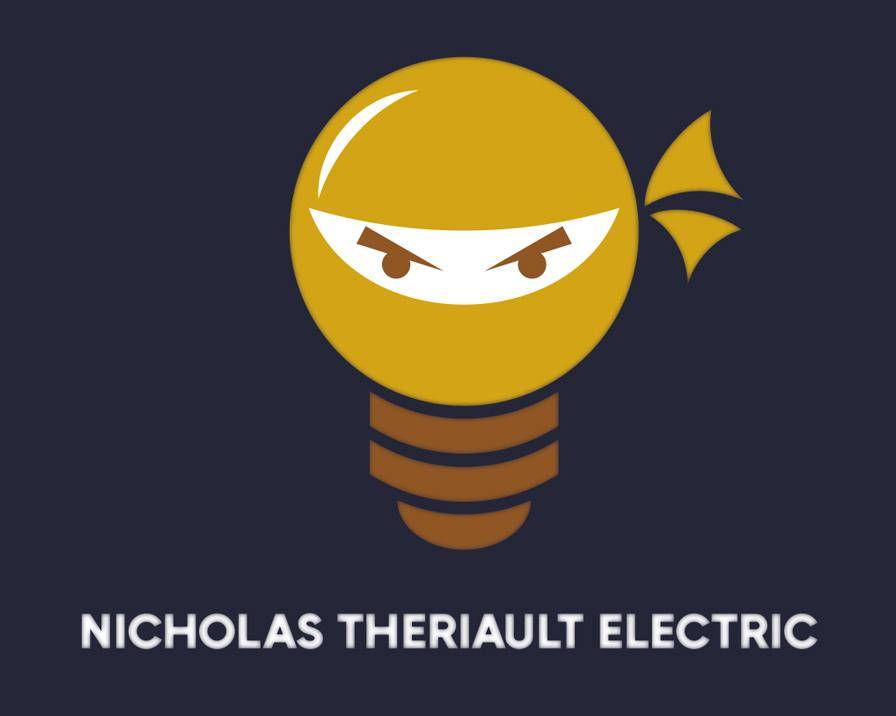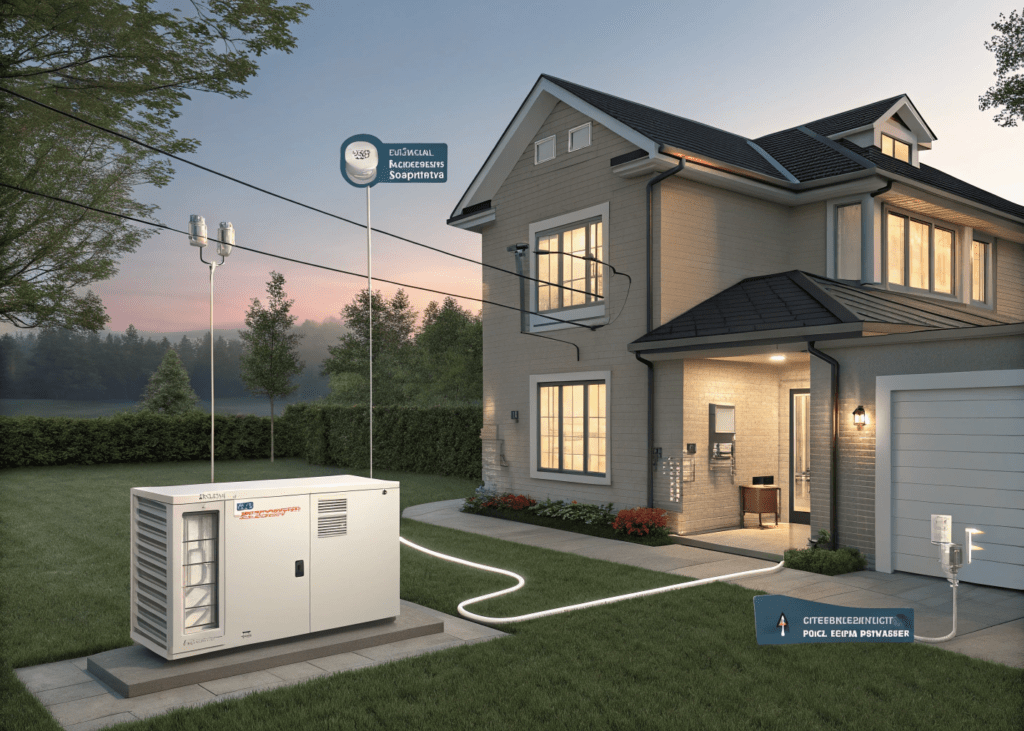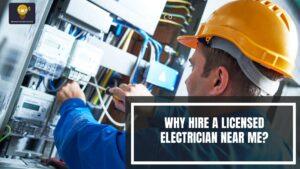Home, Whole House, and Standby Generator Installation: A Complete Guide
Power outages can happen at any time, disrupting daily life and putting your safety at risk. That’s why having a backup generator is becoming a must-have for homeowners. This guide covers everything you need to know about home generator installation, whole house generator installation, and home standby generator installation. Each option offers different levels of power coverage, convenience, and protection. Whether you want to power essential appliances or your entire home, the right generator keeps you prepared. Learn how these systems work, what installation involves, and which type best suits your home’s needs and your peace of mind.
Why a Generator Is No Longer a Luxury
Power outages are more common than most people think. Storms, grid failures, and equipment faults can shut your home down in seconds. Food spoils. Alarms stop. Work-from-home setups fail. That is why home generator installation has moved from a “nice to have” to a practical need. With the right system, your lights stay on, your Wi-Fi runs, and your sump pump keeps working. The result is comfort, safety, and peace of mind.
Three Paths to Backup Power (And Which One Fits You)
Not all generators or setups are the same. You will typically choose among three clear routes:
- Portable units for a few critical loads.
- Home generator installation that powers selected circuits automatically.
- Whole house generator installation that keeps your entire property live.
If you want hands-free, immediate coverage, a standby generator for your home is often the best choice. It turns on within seconds. It also switches back to the grid once power returns.
Home Generator Installation: What It Means
A home generator installation usually covers essential circuits only. Think refrigerators, medical devices, Wi-Fi routers, garage doors, or sump pumps. The system includes an automatic transfer switch (ATS). This switch senses a power outage, isolates your home from the grid, and starts the generator. The process is quick and safe. It also prevents dangerous backfeeding into utility lines.
Key steps include:
- Load assessment to pick the right size
- Safe placement that meets code and clearance rules
- Fuel source selection (natural gas, propane, diesel)
- ATS wiring and testing
- Final inspection and run test
Whole House Generator Installation: Total Coverage
A whole-house generator system powers every circuit in your home. All lights, outlets, HVAC, and large appliances stay on. This option suits larger homes, people who work from home, or properties with critical medical devices. It also makes sense if you live in an area with long or frequent outages.
Benefits you get:
- No manual choosing between “essential” and “non-essential” loads
- Full HVAC support in summer and winter
- Smooth operation for sensitive electronics
- Higher resale appeal for buyers who value reliability
Installing a standby generator at home: Hands-Free Protection
A standby generator installation is a permanent solution. The generator sits outside, similar to an AC unit. It starts on its own, even if you are away. It also runs weekly self-tests to confirm readiness. Because it is hardwired and automated, it is safer than portable units. You do not need extension cords or gasoline cans. For most homeowners, this is the most convenient long-term backup strategy.
Sizing the Right Generator: Don’t Guess
Generator sizing is critical. Too small, and breakers trip or systems fail. Too large, and you overspend on equipment and fuel. During home generator installation, a licensed electrician will:
- Add up the running and starting watts for each appliance
- Consider HVAC, well pumps, and electric ranges
- Factor in surge loads for motors
- Account for future loads, you may add later
As a rule, an essentials-only setup may need 7–14 kW. A house generator installation can run 20–48 kW or more, depending on your total load.
Fuel Choices: What Works Best for You
Your installer will help you pick the fuel based on availability, safety, and budget.
- Natural gas: Continuous supply, no refueling, low maintenance.
- Propane: Clean, stable, good for areas without gas lines.
- Diesel: Strong torque, good for large loads, but louder and needs regular fuel upkeep.
Each fuel type affects runtime, maintenance, and long-term costs. Your site, local codes, and utility access will guide the decision.
The Role of the Automatic Transfer Switch (ATS)
The ATS is the heart of a safe standby generator installation. It detects grid loss fast and switches power to the generator. When the grid returns, it shifts your home back. This avoids backfeeding hazards and protects utility workers. It also keeps the switchover smooth and automatic.
Installation Steps (Start to Finish)
Here’s what a professional process usually looks like:
- Consultation and load calculation
- Recommendation on generator size and fuel type
- Permit and code compliance planning
- Pad and site prep
- Electrical and gas piping work
- ATS install and panel wiring
- Startup testing and homeowner training
- Scheduled maintenance plan setup
Code, Permits, and Safety: Why Pros Matter
Generator installs must follow national and local electrical and gas codes. Clearances from windows, doors, and vents are mandatory. Venting, grounding, conductor sizing, and transfer switch wiring are safety-critical. A licensed electrician ensures everything passes inspection. They also protect you from insurance or warranty issues caused by improper work.
Maintenance: Keep It Ready All Year
Even the best system fails without care. After home generator installation or the installation of a whole-house generator, set a simple plan:
- Run a weekly or biweekly self-test (most units automate this)
- Change oil and filters per manufacturer timelines
- Inspect fuel lines and connections
- Test ATS performance yearly
- Keep the area around the unit clear of snow, leaves, and debris
Routine checks keep your generator ready the moment the grid fails.
Typical Cost Factors to Expect
Total price varies by size, brand, fuel, trenching needs, and ATS complexity. Labor, permits, and gas line work add to the total. While the upfront cost can be significant, long outages often cost more in lost food, frozen pipes, and business downtime. Financing or phased approaches are common for larger installation of whole-house generators projects.
Who Should Consider Each Option?
- Home generator installation: You want essential circuits only. You need an affordable automatic option.
- Installing a whole-house generator: You want everything powered, including HVAC and large appliances.
- Home standby generator installation: You want zero manual steps. You travel often or rely on medical or mission-critical devices.
FAQs
Q1. What size generator do I need for my home?
It depends on your load. Essentials-only setups often need 7–14 kW. A whole-house generator setup can require 20 kW or more. A licensed electrician should size it.
Q2. How long does installation take?
Most home standby generator installation projects finish in one to two days after permits are approved. Complex gas line or trenching work can extend the timeline.
Q3. Do I need permits for a generator?
Yes. Electrical and fuel connections usually require permits and inspections. Your installer will handle this.
Q4. Can I install a generator myself?
No. It is risky and typically violates the code. Always use a licensed electrician for wiring and an approved contractor for gas piping.
Q5. How often should I service the generator?
Follow the manufacturer’s schedule. Most units need oil, filter, and plug service annually or after a set number of run hours.
Conclusion
Backup power protects your comfort, safety, and property. If you want a targeted, cost-effective solution, choose home generator installation. If you never want to think about which circuits matter during an outage, go for whole house generator installation. And if you want an automatic, permanent setup that starts on its own, pick a standby generator installation. Talk to a licensed electrician, size the system correctly, and keep it maintained. That way, the power stays on when you need it most.




